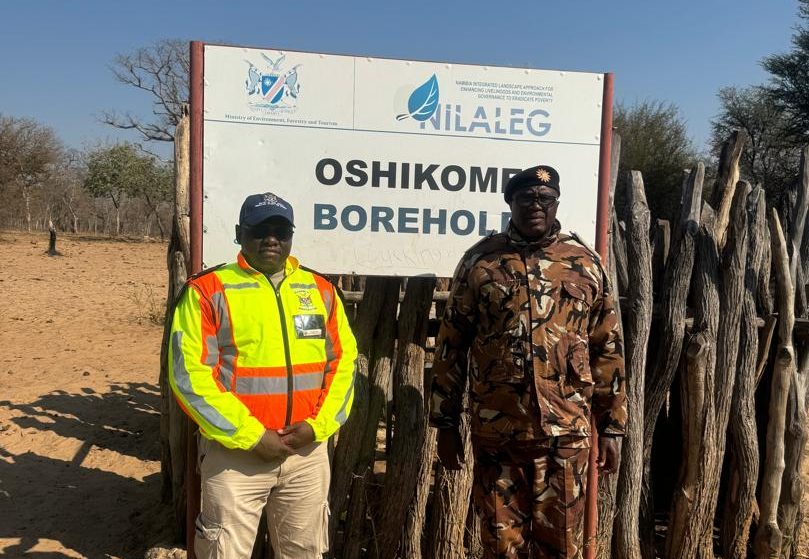Microcosmic, Contrast Factor
Written by on June 14, 2024
Namibia’s unique selling points are manifold, but her ability to contain such diverse landscapes and experiences within its borders makes it a microcosm of Africa — a continent in a single country!
This feature marks the conclusion of our series, which began with the ‘Africa Factor,’ highlighting the country’s unique selling point as part of the vast and beautiful African continent.
It continued with the ‘Darling Factor’, focusing on the beauty, safety and infrastructure that continue to attract tourists to the country.
Now, we draw to a close with the ‘Contrast Factor’, showcasing the exclusive nature of Namibia.
Cultural diversity
Namibia is a lively patchwork of cultural diversity, with varied people, languages and races coexisting together.
Several ethnic groups, including the Aawambo, Ovaherero, Damara, Nama and San people, contribute to the country’s demographic environment, each with its own customs and cultural practices.
The country’s official language is English, a residue of its colonial past, but many indigenous languages, including Oshiwambo, Otjiherero, Khoekhoegowab and others, are widely spoken and valued.
Additionally, Afrikaans and German play important roles, representing the different historical influences.
This unique difference of languages and races exemplifies Namibia’s capacity to merge its history with contemporary multiculturalism, resulting in unity despite variety.
Natural Contrasts
The Central Plateau
Bordered by the Namib Desert in the west and the Kalahari Desert to the east, the Central Plateau comprises of over 50% of Namibia’s total land area.
Most of the population and economic activity is concentrated here, with the capital of Windhoek located in the Central Plateau.
The Great Escarpment, a wall of mountains separating the interior from the Namib Desert developed some 125 million years ago when the rim of Southern Africa was lifted during the breakup of the supercontinent Gondwana, runs along the western side of the plateau.
Deserts
Namibia is home to four arid and semi-arid ecosystems: the Namib, Kalahari, Succulent and Nama Karoo.
Because of the higher-than-average rainfall, the Succulent Karoo and Nama Karoo are not, strictly speaking, real deserts. Hence, the collective understanding of deserts in Namibia remains the Namib and the Kalahari.
Namib Desert
The Namib stretches along the Atlantic coasts of Angola, Namibia and northwest South Africa, specifically southward from the Carunjamba River in Angola, through Namibia and to the Olifants River in Western Cape, South Africa.
The world’s oldest desert is a breathtaking spread of golden dunes and harsh, unearthly scenery.
Sossusvlei’s enormous sand dunes, which are among the highest in the world, stand as massive sculptures carved by the wind over millennia.
The interplay of light and shadow at sunrise and dusk creates an awe-inspiring sight that leaves people in amazement.
Despite its arid circumstances, the desert teems with life that has evolved specifically for this tough environment, such as the oryx, desert-adapted elephants and the Welwitschia mirabilis plant, a living fossil.
Kalahari Desert
Located in the heart of southern Africa, the Kalahari (a semi desert) spans several countries, including Namibia, Botswana and South Africa.
Despite its name, the Kalahari is not a desert in the traditional sense.
Instead of endless dunes, it is a vast semi-arid sandy savanna, characterised by its red sand, sparse vegetation and unique ecosystems.
The flat, dry landscape of the Kalahari is home to a variety of unique flora and fauna.
The region’s generally consistent precipitation patterns allows for a high level of productivity and biodiversity, making it an intriguing destination for botanists, ecologists and lovers of the wild in general.
The Skeleton Coast
Moving westward, the Skeleton Coast offers a glaring and spooky contrast with its shipwreck-scattered beaches.
This barren and mist-covered beach is both scary and breathtaking.
The thundering Atlantic waves pound against the desert’s edge, resulting in a unique setting where sand dunes meet the sea, popularly known as Sandwich Harbour located south of Walvis Bay.
The cold Benguela Current supports a thriving marine ecosystem and colonies of Cape fur seals bask on the rocky outcrops.
Wetlands
In sharp contrast to the dry south, the north-eastern Caprivi Strip is an oasis of rivers, wetlands and floodplains.
The Zambezi, Chobe, Linyanti and Kwando rivers support a wealth of wildlife, including enormous herds of elephants, hippos, crocodiles and a diverse range of bird species.
The lush environment provides possibilities for river safaris, fishing and birdwatching.
Wildlife Abundance
Apart from the teeming wildlife in the Caprivi Strip, Etosha National Park, one of Namibia’s premier wildlife destinations, is a jewel in the crown of African conservation areas.
With a massive salt pan, visible from space, at is the remains of an ancient lake that evaporated thousands of years ago.
During the dry season, the pan transforms into a shimmering, nearly blinding white stretch.
However, during the rainy season, the pan can fill with water after heavy rains, attracting enormous flocks of migrating birds and other animals in the park.
Waterholes
Waterholes are the lifeline of Etosha National Park, acting as important gathering areas for animals, particularly during the dry season.
These natural and artificial water sources offer unparalleled wildlife viewing opportunities.
Many lodges and campsites in the park are deliberately positioned near these waterholes, allowing tourists to see animals from the comfort of their lodgings, frequently witnessing dramatic predator-prey encounters or the peaceful coexistence of various species.
Okaukuejo is Etosha’s most well-known waterhole, noted for its nightly wildlife shows, particularly the endangered black rhino.
Flood-lit after dark, it allows tourists sleeping at the adjacent rest camp to watch a nocturnal parade of creatures such as rhinos, elephants and lions.
Exclusive Experiences & Accommodations
Whether it is staying in a luxurious lodge tucked away in the Namib Desert like The Desert Grace, enjoying a serene riverside retreat in the Caprivi Strip at Namushasha River Lodge or relaxing in a stylish hotel like The Weinberg in the bustling city of Windhoek, Namibia caters to every kind of traveller.
These accommodations provide the perfect balance of comfort and adventure, allowing visitors to fully immerse themselves in the country’s stunning landscapes while enjoying world-class amenities.
The post Microcosmic, Contrast Factor appeared first on The Namibian.



